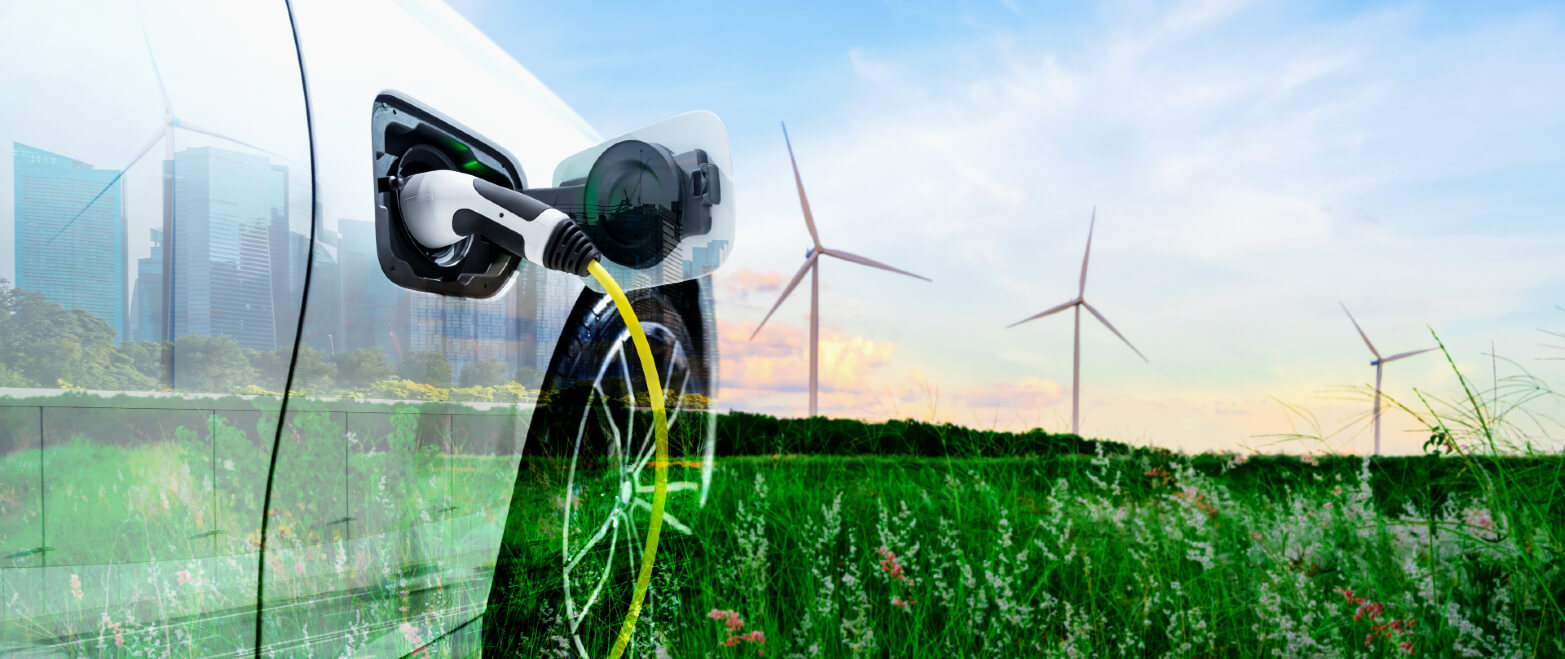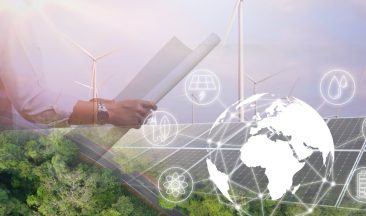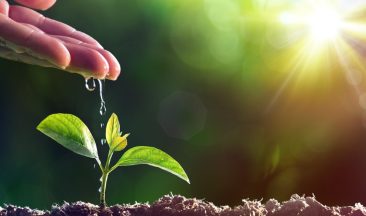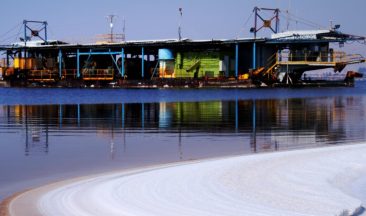Interview with ICL’s Phil Brown, President of ICL Phosphate Solutions- Part One
Lithium iron phosphate battery technology is key to the future of clean energy storage, electric vehicle design, and a range of industrial, household, and leisure applications. In Part One of this two-part interview, ICL’s President of Phosphate Solutions, Phil Brown gives us some valuable insights into the LFP batteries market and how ICL is meeting the urgent requirement for affordable LFP battery materials.
The Transition to Sustainable Energy
The transition to renewable energy is gaining pace on a global scale. The human race is set to break its historic dependence on fossil fuels in favor of clean energy. It’s been possible to generate green energy from a variety of sources for well over a generation, but the Achilles heel of renewable energy has always been effective energy storage.
Coal and oil-burning power stations can generate energy on demand (as long as fuel supplies are available). The generated electricity can be transmitted straight to the consumer. A hybrid grid that draws on solar energy, wind power, tidal power, etc. inevitably experiences peaks and troughs of energy generation, often with unforeseen disruption due to environmental conditions.
Hybrid grids require dependable energy storage solutions in order to function and meet peak demands. Lithium iron phosphate battery manufacturers are using the latest technological advances to create smart batteries that provide safe (and cost-effective) energy storage on a mass scale. In order to produce LFP batteries, manufacturers need battery materials, including advanced phosphate products.
ICL Group is one of the world’s largest and most innovative suppliers of processed materials for lithium iron phosphate battery manufacturers. The group mines phosphate rock at its Rotem plant in Israel’s Negev Desert and in China. The company runs additional phosphate production facilities in Europe, the US, and Brazil. ICL initially processed phosphates to create fertilizers but rapidly branched out to manufacture – or to supply manufacturers – across a wide spectrum of food and industrial applications.
ICL was quick to see the potential of advanced phosphate compounds for manufacturing LFP batteries, especially for the EV market. The Company is currently building a state-of-the-art $400 million plant in St. Louis to supply the rapidly growing US market for lithium iron phosphate batteries for cars. ICL is also financing strategic research into energy storage products and is set to become a world leader in a market that is expected to eventually be worth billions of dollars.
Introducing Phil Brown, President of ICL Phosphate Solutions
Phil Brown is the President of ICL Phosphate Solutions. He was kind enough to talk about his work at ICL and recent innovations in lithium iron phosphate battery technologies.
Welcome Phil! Thank you for joining us today. Perhaps you can start by telling us something of your background and share your journey to becoming the President of ICL Phosphate Solutions.
I’ve been with ICL for a little over 17 years. In that time, I’ve held a number of different roles; ICL invests in people and helps them with professional development. Prior to being the President of the Phosphate Division for ICL, I ran the largest business unit within the Phosphate division, Advanced Additives. The operation covers everything non-food related in the phosphate business (there is a separate ICL food business unit). Prior to that, I ran global operations and supply chain for ICL. Before that, I had over 30 years of experience working in specialty chemicals and food ingredients formally before ICL Monsanto and Celanese.
ICL is a leader in the phosphate market, how do you view the company’s role in the LFP battery industry?
OK, that’s a question about our strategic role in a global industry. I’ll break my answer down into two pieces.
The starting point is that LFP is a cathode-active material. It’s a very natural fit for us going downstream. Our phosphate business strategy has evolved continually over the last 20 years. We basically take our core mineral, phosphate rock, and look for new applications to take it further and further downstream. Initially, we focused on fertilizers and then expanded into advanced additives applications, technical applications, food applications, food ingredients, and now into battery materials – especially lithium iron phosphate battery materials for cars. As we’ve developed more phosphate-based products, we’ve invested more and more in R&D.
Phosphates are a core component of battery materials, and we’ve been providing precursor materials to battery materials producers for years. We were very active in the Chinese supply chain for around a decade (supply and precursors) and seriously considered going further downstream. At the time, there were some concerns about the technology, about a number of different market factors, and we chose not to proceed.
Today, the wider situation is more favorable. The emerging market really is a natural fit for us because of the massive demand for phosphate products – and also of the similarity between the products. There are fundamental similarities in how materials for LFP battery manufacturers are produced and the other advanced phosphate compounds we currently produce.
On a macro scale – or at a cultural level – there’s a clear fit with wider ICL strategy and mission. We’re deeply committed to sustainability and a worldwide transition to green energy. The group is investing massively in creating a hybrid microgrid for its own plants. LFP batteries are at the heart of our own planning and our expansion into the lithium iron phosphate battery market (currently as a materials supplier) is a natural and logical progression.
That’s really interesting. The world’s energy ecosystem is changing rapidly, what opportunities do you see around battery materials?
Sure. As I said, we’ve been active today in precursor materials for quite a long time, and that’s not only in the case of LFP and cathode active materials, but providing precursors as well for the electrolytes that go into lithium-based batteries as well, and also some smaller quantity additive stabilizers in batteries.
I see our future as expanding every field where we’re active in precursors, and then also playing a role in recycling batteries at the end of their useful life. ICL is already very active in recovering key minerals and key compounds from recycled materials like bromine from plastics and phosphates from organic waste. We want to apply that knowledge and technology to battery materials and recycling. The focus isn’t just on LFP directly back to LFP, but also on recovering useful minerals from end-of-life batteries.
So in the context of the global push for renewable energy, where do you see LFP batteries fitting into the broader energy storage solutions landscape?
It’s already clear that LFP batteries have a large role to play in a number of different parts of energy storage, whether you’re an LFP battery manufacturer or a company or community that wants to develop grid storage or storage for alternative power generation. I think we’re all keenly aware that if you’re generating more and more electricity from solar systems, from wind energy, you need some type of advanced storage capacity.
Today, most of the electrical grid is based on the produce on demand model. Obviously, we don’t have that control over the natural world like the sun and the wind like we do conventional power plants. Storage has a huge part to play in that. LFP specifically, is a lower-cost alternative to high nickel and other precious metal-based battery materials or battery systems.
Also when you look at the LFP battery life cycle and the number of cycles that it can perform, it’s a great product for energy storage applications. The same principles apply if you want to design a lithium-iron-phosphate battery for electric vehicles. You need a high-capacity battery that is smart, safe, and easy to mass produce affordably.
If you really want to capture the LFP battery market, you need to understand that there’s going to be a range of batteries, to reflect consumer or driver demand. There will be a top-end market for high-performance batteries that can deliver speed or power industrial vehicles. There will also be a wider, middle band of ‘workhorse’ batteries for family cars, etc. where economy counts. Add to that a lower capacity range for devices like scooters, and futuristic vehicles that we can still only guess at.
If I was an LFP battery manufacturer, I’d be thinking in terms of flexibility and scalability in my future design goals. As a supplier of advanced phosphate and bromine compounds, I’m already thinking along those lines.
Our role in this is to be a critical part of that supply chain. We’re actively expanding as a cathode active material producer, producing the positively charged part of a battery itself. Others will produce the cells and the packs that make up the overall storage for energy. But we see our role as providing those performance materials, (as we already do for a lot of industries). We’ll enable lithium iron phosphate battery manufacturers to build cost-effective and efficient batteries. We’ll also create a circular economy to recycle batteries, components, and materials.
Are there any innovations in the Phosphate Solutions operations that you would like to highlight today?
There are several exciting innovations, albeit developmental ones. When I look at the technology that’s been used for the last 10 years to produce LFP batteries, (mostly in China) I can see a number of improvements that we can make to these processes. We have the know-how to produce phosphates on a large industrial scale, efficiently and cost-effectively. We’re already reducing the capital intensity of the processes and improving the overall performance of products by changing some of the end characteristics.
Chemically, we’re still working with lithium iron phosphate LFP, but we’re adapting morphology and changing particle sizes to allow additional performance characteristics. This is the essence of what we’ve already been doing for 100-plus years at ICL – it’s in our DNA! We already see in the early stages of our R&D and pilots the potential to improve these processes and improve these products. The innovations are transferable to other materials like electrolytes and to processes like recycling as well.
The transition to EV vehicles and hybrid grids based on clean energy is gaining momentum across the US and the developed world. The LFP batteries market is currently valued at over $13 billion. It is projected to reach close to $70 billion by 2032. This is an astonishing rate of predicted growth. Companies that position themselves successfully to claim a share of the market, can expect exceptionally high returns on their investments.
More on the subject:
Bromine Based Flow Batteries and Renewable Energy Storage Solutions
The Future of Batteries In Renewable Energy Storage
ICL’s Energy Storage Solutions – Promoting Sustainability
ICL Group, with over 100 years of experience in phosphate mining and processing, and access to major reserves of phosphate rocks, already has a strategic competitive advantage. The new $400 million dollar St Louis plant (partially funded by the US government) will make ICL a dominant force in the US, and ultimately global markets. The new St Louis plant will supply manufacturers of lithium iron phosphate batteries for cars, but ICL is already researching new applications for its advanced phosphorus compounds. These include smart batteries for grids and for smart cities.
In Part Two of this article, Phil Brown will discuss future innovations and ICL’s commitment to sustainability – and how the company’s vision aligns with the future of LFP Batteries.








